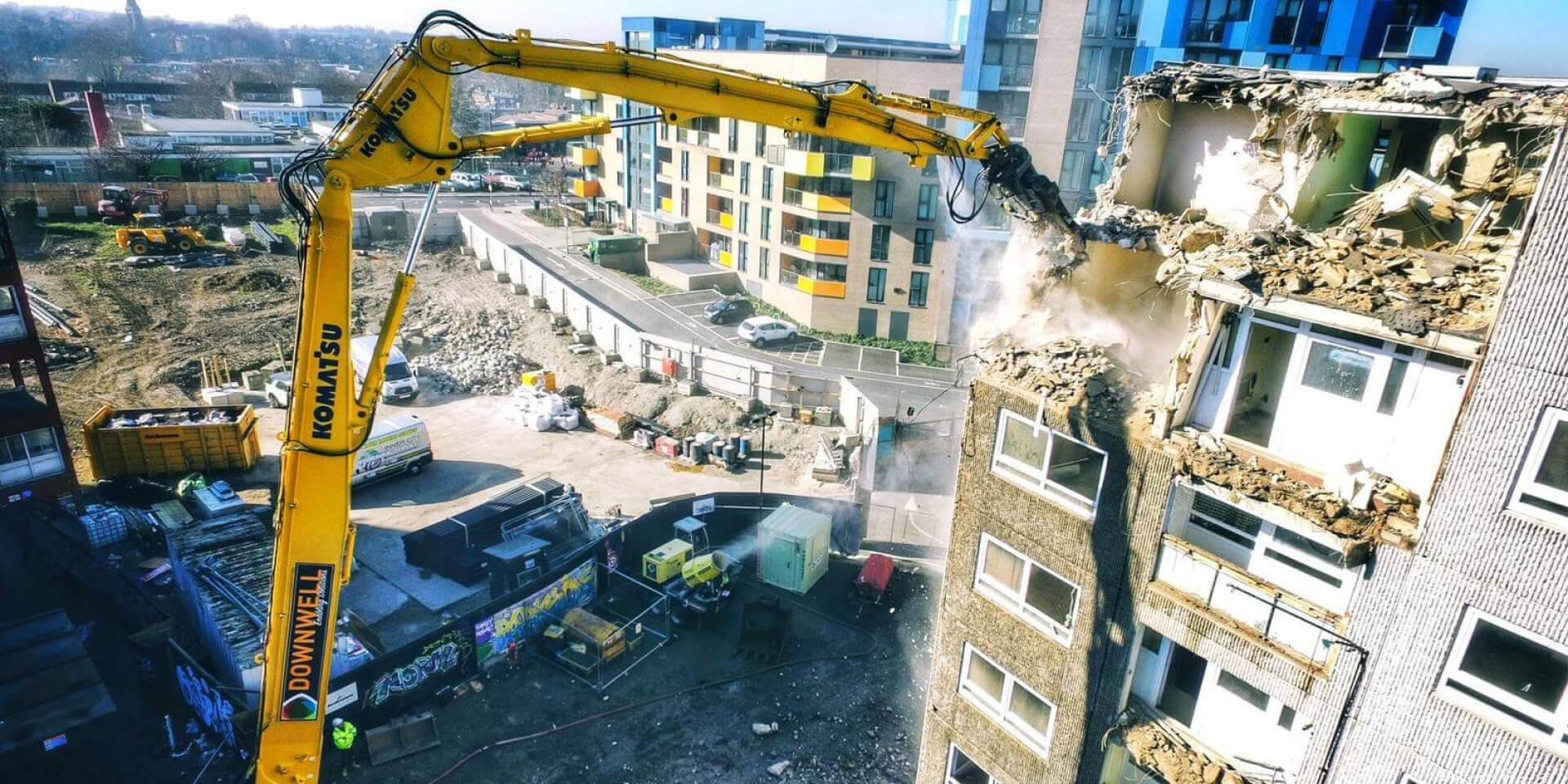Criticism over drone video is justified but misplaced.
 I will preface what I am about to say by reiterating my desire for a totally safe demolition industry in which every worker goes home alive and in one piece at the end of each shift. And I am in no way condoning bad or unsafe practice.
I will preface what I am about to say by reiterating my desire for a totally safe demolition industry in which every worker goes home alive and in one piece at the end of each shift. And I am in no way condoning bad or unsafe practice.
But the ongoing furore surrounding the drone video that we posted last week hints at an industry that has lost sight of the bigger picture; one that is far happier pointing out the shortcomings of others than confronting and addressing their own.
We publish around 1,000 news items each year; that’s an average of around three a day, 365 days of the year. Those news items might range from the introduction of a new product to the publication of a new set of guidance; from the successful completion of a complex contract to the tragic death of a demolition worker killed in the line of duty.
Typically, very few people bother to comment on these news items, although some do send us email messages and call us on the telephone to comment, congratulate, or take exception to our line of reporting. And we have grown accustomed to writing for a silent majority.
But put up a video showing questionable practice, and suddenly your inbox is overflowing with bile and vitriol and you can’t move for armchair experts all keen to wag an accusing finger at a fellow contractor; to point out why that bad practice would never happen on one of THEIR sites; how bad practice is somehow confined to ‘lesser’ contractors.
And yet their declarations of innocence and expertise are not borne out by accident statistics. In the past few years alone, accidents and fatalities have befallen some of the biggest, best-known, most-respected and officially-accredited demolition contractors in the UK. Furthermore, when accidents do happen, they are quickly swept under the nearest available carpet until the Health and Safety Executive gets around to cleaning house, at which point (usually several years later) the uncomfortable truth is laid bare. At that time, even though someone has been hurt or killed and a contractor has been found complicit, the silent majority reverts to type and a hush falls over them.
Don’t get me wrong. I welcome comments and even criticism as they are the fuel that powers our ongoing improvement. But before you hit the comment button (and even if, like me, you’re not even remotely religious) think over this Biblical quote:
“Let he who is without sin cast the first stone”.
Here endeth our latest lesson.







 I will preface what I am about to say by reiterating my desire for a totally safe demolition industry in which every worker goes home alive and in one piece at the end of each shift. And I am in no way condoning bad or unsafe practice.
I will preface what I am about to say by reiterating my desire for a totally safe demolition industry in which every worker goes home alive and in one piece at the end of each shift. And I am in no way condoning bad or unsafe practice. Ambitious thieves have stolen an entire bridge, apparently for its scrap metal, in the western province of Kocaeli in Turkey.
Ambitious thieves have stolen an entire bridge, apparently for its scrap metal, in the western province of Kocaeli in Turkey. Animal rights groups are up in arms over the use of endangered elephants in place of bulldozers in India.
Animal rights groups are up in arms over the use of endangered elephants in place of bulldozers in India. As the UK economy braces for the news that the five-year roller coaster ride has taken another nosedive to take us into what pundits have labelled a “triple-dip” recession, we are constantly told how our cousins across the Atlantic ducked in and ducked out of recession and are now once again on the gold-lined path to economic stability and prosperity.
As the UK economy braces for the news that the five-year roller coaster ride has taken another nosedive to take us into what pundits have labelled a “triple-dip” recession, we are constantly told how our cousins across the Atlantic ducked in and ducked out of recession and are now once again on the gold-lined path to economic stability and prosperity.